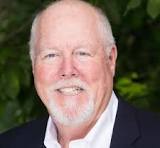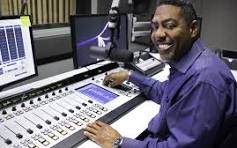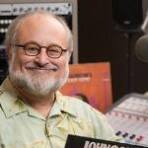Our ongoing series of virtual conversations with jazz broadcasters on why Great Jazz Radio Still Matters, we hear from disparate parts of the country – from New Orleans, Chicago and Los Angeles. Middleton O’Malley – known to his friends as Middie – was one of my broadcast colleagues at the legendary community radio station and upholder of all things New Orleans music – WWOZ. When Suzan & I arrived in New Orleans a short stint while she was a visiting professor at Loyola University, zeroing in my radio interests I was constantly impressed at not only Middie’s sonorous voice, but also his music selection. Still based in NOLA, Middie now hosts a Monday morning 8-10 shift for “All Jazz Radio” WETF (www.jazzradiowetf.org). By day Middie is a real estate agent.
From SoCal we hear from LeRoy Downs, who broadcasts out of KCRW 89.9FM, an NPR station. I met LeRoy years ago as a constant presence at the Monterey Jazz Festival. He frequently hosted the MJF proceedings at the Dizzy’s Den venue. More recently LeRoy has applied his jazz presenting interests to develop the vibrant “Just Jazz Series” of concert performances around L.A.
From Chicago we hear from one of my fellow jazz journalist (author of The Playboy Guide to Jazz) and longtime jazz radio host Neil Tesser, who has hosted radio programs in Chicago since 1973, on stations including WNIB-FM, WBEZ (Chicago Public Radio), WSBC-AM, as well as on the nationally-syndicated WFMT Jazz Radio Network. Neil and Mark Ruffin (currently heard on SiriusXM’s Real Jazz channel) also created and co-hosted the nationally-syndicated jazz review show “Listen Here!” Tesser currently hosts the Chicago portion of the KSDS (San Diego) slot “Jazz Across America.”
A jazz radio voice from NOLA: Middleton O’Malley

(In response to my question about the guiding philosophies behind his jazz programming efforts and choices) “Those are heavy words and I’m afraid that for me there is no celestial guidance, nor spiritual manifestation. It’s pretty straight forward. The show focuses almost exclusively on so-called Contemporary Jazz with a balance of styles, eras, instruments, artists, and sonic flow. This blended mixture is designed to honor the musicians, and entertain and inform the audience. That’s job one.
As for the rest of it… I want to hit a groove that moves a listener through a range of emotions. Thought provoking runs, body moving rhythms, sublime heart engaging melodies, harmonic compatibilities that cause the listeners brain to surf the brilliance of the artists’ creation, and an intellectual appreciation for the importance of high quality improvisational music.
No matter my credentials, years in the business, appreciative comments or reviews, I do not presume to know a damn thing about the endless styles of programming, or the limitless world of improvisational Jazz. Then there’s the ever-evolving gift of music that us programmer/show hosts have a responsibility to present in a thousand different (and acceptable) ways.
Finally, there’s an ever changing generational wave of performers who enthusiastically embrace the past and explore the future while making incredible personal sacrifices to perpetuate America’s one true musical art form. I’m honored to be a small part of their beautiful world.”
Hear recent Middleton O’Malley shows here…
Holding it down in SoCal: LeRoy Downs

“I’m “The Jazzcat”, jazz radio broadcaster in Los Angeles for the last 25 years, currently on Sunday night at 10:00pm on KCRW.com. What constitutes a well-rounded jazz radio program is openness and exploration! As a jazz broadcaster here in the 21st century, my job is to create a sonic color pallete for those who appreciate this music and for those who are open. A closed mind completes the sphere of knowledge where no more learning can take place. I am a seeker and I go into the universe as an explorer of space, finding those gems to present and program in a manner that intrigues curiosity.
With texture, color, velocity, buoyancy, harmonics, culture with a splash of nostalgia, it is important to lay out an uncharted adventure, leaving listeners with a sense of wonderment and possibility about the current state of the art. The music should leave you bewildered, angry, hopeful, sad. full of love, and excited, but mostly with flexible emotions. Can you be swayed, can your mind be changed, can you view the world through eyes other than your own? We want you to feel and question the feelings within yourself and how you relate to the world.
Jazz music is an ever-changing landscape. A slight shift in the weather, rotation of the planet, political upheaval, race relations, to the love of your children and grandchildren can all be addressed in the messages that lie deep inside of composition. All designed to not just entertain, but to receive its messages literally and subliminally. All while provoking thought, questioning your mores, and connecting with the frequencies of your body waves.
These vibrations NEVER leave us. They are an amalgamation of who we were, who we are, and who we will be. Just as the nature of the music progresses, we can see that these sounds and shapes have molded us to some degree into the beings that we are, the way we think, the way we express ourselves, and the way we love.
I believe in the growth of humanity, which is why my music programmng hardly ever repeats. It’s a discovery that I think we all benefit from. If I’m playing what you already know, the mind tends to relax with familiarity and rely on the rhythms and harmonies that already exist inside your body and there is no progression. If you are challenged. either with complexity or simply frequencies that are new, you emote either with curiosity, disdain, love or confusion. Whatever the feeling is, there are questions which means you as a listener are seeking as well. I love tqaking these active listening, uncharted journeys and ending up in new places. I am only guided by the universe and the moment, never pre-programmed or swayed by consultants. Always free, open and based in love and respect!
Chi-town Jazz Voice: Neil Tesser

“Whenever possible, I try to balance an inordinate number of variables: classic recordings and new releases, vocals and instrumentals, Black artists and White, a mix of homegrown and global musicians, “mainstream” and edgier improvising, familiar songs and original compositions. Bu “balance,” I don’t mean one-to-one ratios. So, for instance, while I always lean toward instrumentals, I want to pepper in a vocal or three within a given hour. And while I want listeners to hear something different and challenging – which these days increasingly includes jazz influenced by other cultures (Asian, African, South American… I usually won’t include a lot of that within a program, or even necessarily in every program.
But my main goal is to find the connections that will take listeners on a journey, as seamlessly as I can manage, across this varied sonic landscape. I try to lead listeners from a track they may have previously heard to an artist they thought they didn’t like, or that they never knew existed, without crashing the party. I’m not trying to shock. I’m trying o expand the canvas while showing how disparate things fit together, either sonically or stylistically or historically. The right connections can take people from A to Z – from Armstrong to Zawinul – in the course of five or six tracks, on a trip that needn’t be strictly chronological.
And, I’d rather not over-explain any of that. I believe you can convince the ear, rather than the cerebellum, that two widely different pieces, sometimes recorded decades apart, really do relate to one another. If that convinces fans of either one of those tracks to seek out the other, all the better. Throw in some judiciously edited commentary, an anecdote where approporiate, and I’ve done my job.
